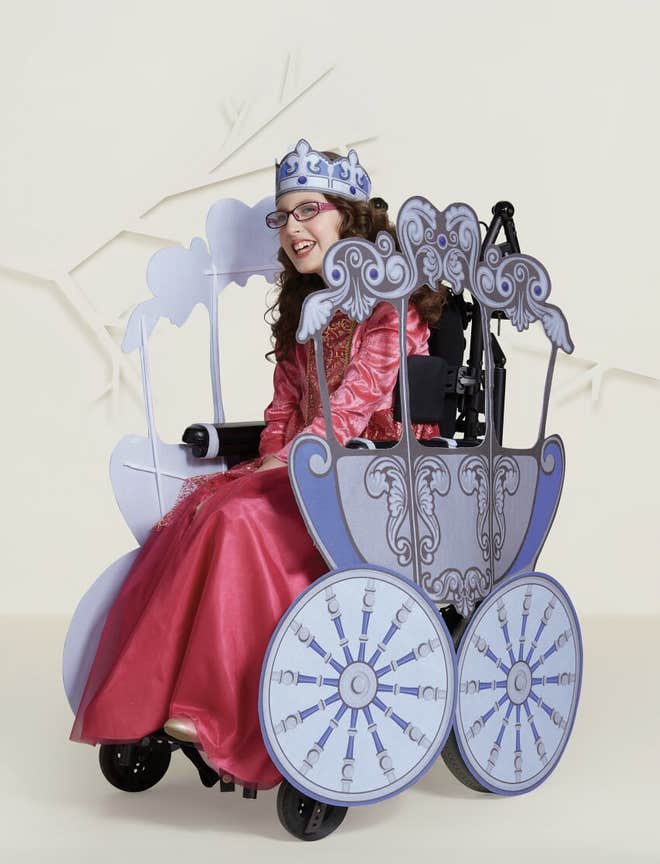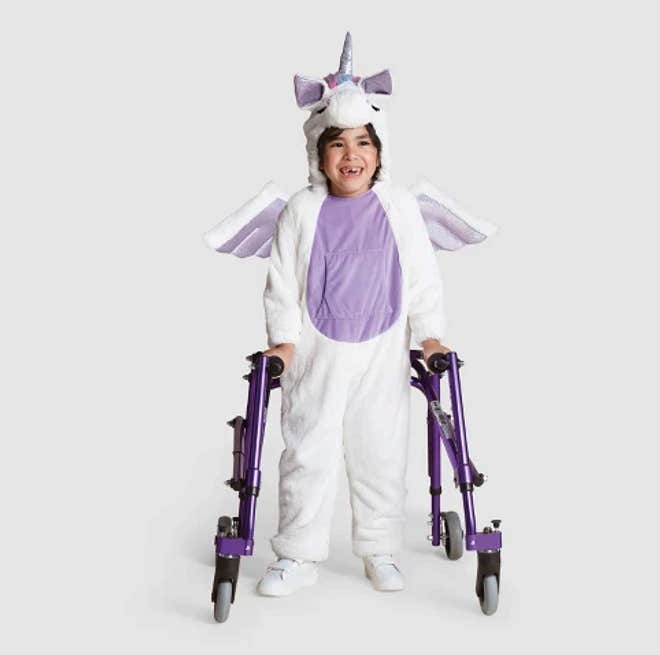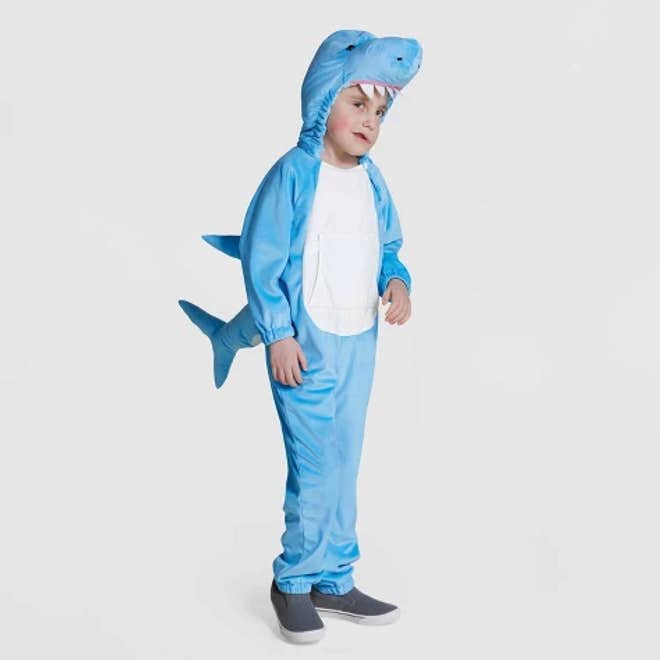As for coming Halloween, Target has designed sensory-friendly costumes.
As part of their new Hyde and Eek! Boutique, the retail giant is releasing the line of unique costumes and fun covers that transform wheelchairs into a pirate ship or princess carriage.
They offering costumes for special children who use wheelchairs, the chance to transform it into a purple princess carriage, while the other covering sees wheelchairs of all sizes turned into a pirate ship, complete with its pirate flag.
“From a fun shark and unicorn to a princess and a pirate, these costumes feature thoughtful details like flat seams and no tags, helping even more kids enjoy the festivities of the fall season,” a Target spokesperson told “Good Morning America.”
One of the costumes, a Princess Carriage costs $45, features two intricately decorated panels in gray, white and purple, they can be fit for royalty and can easily attach to a child’s chair using “the hook-and-loop closures for a secure fit.”
The second wheelchair-inclusive costume allows a child to dress up as a pirate, with his or her very own ship! The chair’s panels on the $45 ensemble even include ocean-patterned wheel covers for the full effect and go swimmingly with the adaptive pirate outfit ($25).
On the shark costume, which retails for $25 for toddlers and $30 for older children, hood and fins are “removable to accommodate sensitivities,” while the unicorn costume, available for the same prices, features a detachable hood, tail, and wings.
Target’s new designs come two years after the store launched sensory-friendly pieces for their popular children’s line Cat & Jack when designer Stacy Monsen talks about the inspiration behind the collection.
“I have a 7-year-old daughter, Elinor, who has autism,” she said. “She’s not potty-trained, which means finding clothes that fit is a challenge. For pants or shorts, I either size way up or buy pieces that are all function, no style. I’ve met lots of other parents who face similar challenges, including many of our guests and team members.”
“After talking with some of my internal design colleagues I thought, why not create pieces that address some of these problems?” Monsen added. “So we formed a volunteer team outside our normal roles, and began to research and build our proposal.”
“We learned that sensory-friendly apparel can mean different things for different people,” she continued. “For these pieces, we decided to start with our core tees and leggings, and address guests’ most common requests, like removing tags and embellishments that can irritate the skin. We also added more ease through the hip and a higher rise in our leggings to fit with diapers, if needed, for older kids.”






